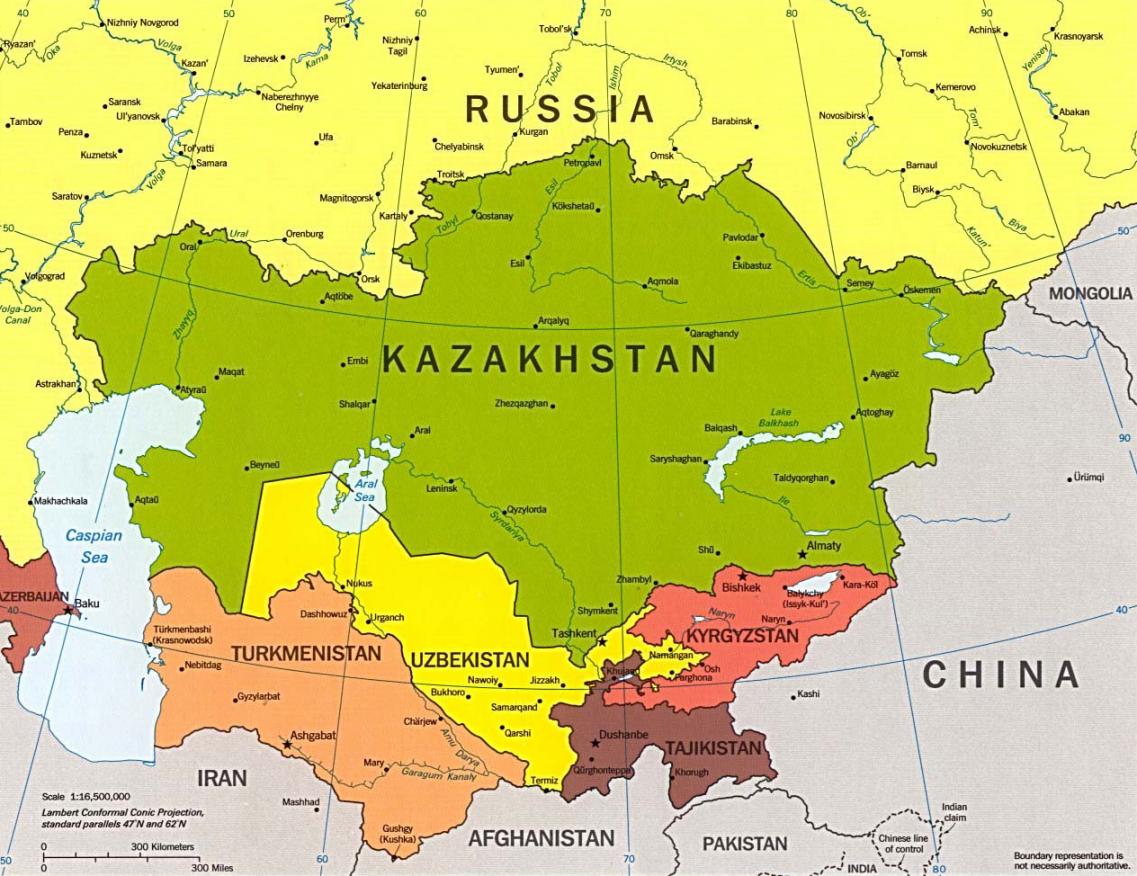During the international military intervention in Afghanistan, major powers viewed Central Asia primarily through the lens of the conflict. As the allied forces have scaled back, China, Russia and the United States have shifted their focus to the region’s economic potential.
This shift could help Central Asia integrate with the global economy, but if conducted poorly could subject the region to damaging competition between Beijing, Moscow and Washington. As these powers implement their respective visions for Central Asia, they should look for opportunities to cooperate among themselves, Jeffrey Mankoff
commented for The Diplomat.
During an October 2013 visit to Kazakhstan, Chinese President Xi Jinping outlined his vision of a Silk Road Economic Belt (SREB), and shortly after the concept of the so-called 21st Maritime Silk Road was presented by him in Jakarta. Together, this “One Belt, One Road” (OBOR) will create trade corridors connecting East and Southeast Asia with most of the rest of Asia, Europe, the Middle East and Africa.
China’s vision includes transit via rail, road, air, sea and pipelines. Financing will come from China’s $40 billion Silk Road Fund, as well as new Chinese-led multilateral development institutions such as the Asian Infrastructure Investment Bank (AIIB) and the Shanghai-based BRICS New Development Bank.
A roadmap released at the end of March 2015 specified that the OBOR initiative will “promote … connectivity,” “establish and strengthen partnerships” along the route and establish new “connectivity networks.”
The benefits to China are clear: Chinese analysts note that the SREB will encourage economic development in China’s restive Xinjiang region, and will boost Chinese exports to Central Asia. In addition, expanded land transit allows China to diversify its import and export channels, diffusing risk from maritime lanes still controlled by the U.S.
The investment in new infrastructure also cements Chinese economic and, some fear, political influence. Part of the SREB vision is the creation of new institutions with a strong Chinese voice, like the AIIB, that could challenge existing US-led alternatives.
Russo-Centric Eurasia
Russia’s vision for Eurasian integration, less ambitious to begin with, has suffered a string of reversals since the beginning of the conflict in Ukraine. Focused on the Eurasian Economic Union (EEU, which was established in January 2015), Russia’s vision concentrates on establishing a Russo-centric Eurasia as one pillar of a new multipolar world order, alongside the US-led West and an anticipated Chinese-dominated Asia.
Unlike the Chinese or American concepts of Eurasian integration, Russia’s approach is inward looking and protectionist. The foundation of the EEU is a customs union, whose members have cut tariffs among themselves while raising them against non-members. The result has been growing dependence on Russia for the smaller EEU states, coupled with upheaval precipitated by the collapse of the ruble.
US Vision
The US vision for Eurasia shares the Chinese emphasis on inclusive trade and transit integration, but also seeks to encourage market liberalization and political pluralism. The New Silk Road initiative, first unveiled by then-Secretary of State Hillary Clinton in a July 2011 speech in Chennai, was designed to turn postwar Afghanistan into a hub of commerce between Central and South Asia. However, the initiative was light on specifics, and has been short of political and financial support domestically and in Central and South Asia. The highlight so far has been widely panned efforts to create regional electricity grids.
Notably absent from this vision, too, were China and Russia who interpreted the New Silk Road’s focus on India and South Asia as a transparent strategy to reorient the economies of Afghanistan and Central Asia away from their existing partners in the north (Russia) and east (China).
Prospects
Prospects for all three visions are uncertain at this stage. Central Asia would be best served by the three powers looking for ways to make their respective visions mutually reinforcing, and responsive to the interests of the region, rather than using Central Asia as a playing field for their own strategic rivalries.
Cooperation among the three major powers will be hard to achieve, although the US and Chinese approaches at least share some common ground. Yet cooperation will be challenging. Given China’s proximity to the region, the US will often find itself deferring to Chinese preferences.
Cooperation with Russia will be harder for both the US and China. Though it has given lukewarm assent to China’s regional ambitions, Russia is worried about the growing power disparity and Chinese infrastructure projects that bypass Russia.
Nonetheless, Beijing, Moscow and Washington have a common interest in a stable, prosperous Central Asia, whatever their disputes elsewhere. Cooperation among the major powers would also maximize the benefits for Central Asia itself, which would have multiple options for accessing global trading routes. Globalization has largely passed the region by, and for years the major powers have been too focused on security, and on the conflict in Afghanistan, to give Central Asia’s needs much consideration.


